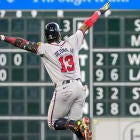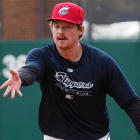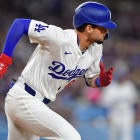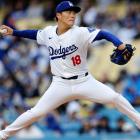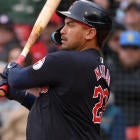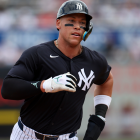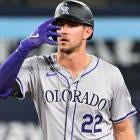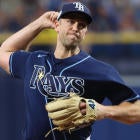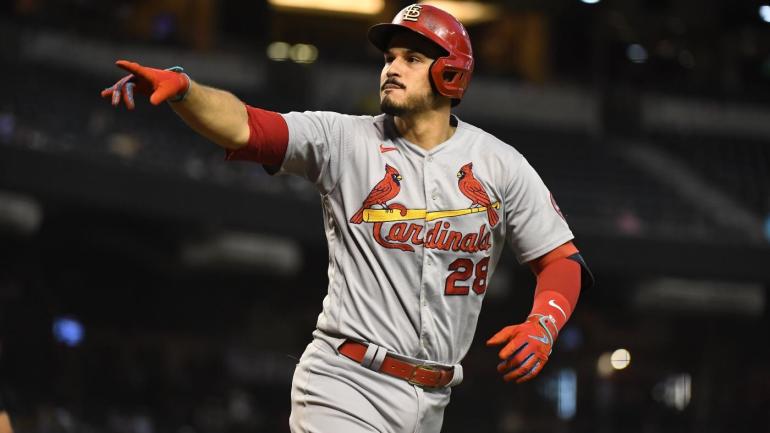
The past few seasons have seen a pretty remarkable flattening of the position values in Fantasy Baseball, but if you've been playing long enough, you definitely have memories of the days when positional scarcity was a significant factor in how you valued players. Back in the early 2000s, you really had to prioritize certain positions over others are you would get completely left behind, and that just really hasn't been the case in recent years.
Case in point, back in 2010, shortstops collectively sported a .693 OPS, compared to an .802 OPS from first basemen. Only four shortstops in 2010 had at least 90 runs or 90 RBI or 20 homers. Compare that to 2019, when the worst position was second base; they collectively hit .737 and first baseman had an .800 OPS, and eight second baseman had at least 90 runs or RBI.
Back in the day, reaching for someone like Troy Tulowitzki or Hanley Ramirez was a must, not just because they were elite players in their own right but because they were just so much better than the rest of the players at the position. You were willing to pass on a "better" player in order to secure reasonable performance at that shallow position.
However, because of increases in strikeouts and shifting, the defensive spectrum just isn't as wide as it once was. Teams are more willing to play guys out of position or stick with somewhat lesser fielders than they would have in the past. Position scarcity had become a relic of the past as a result.
However, on the third base preview episode of Fantasy Baseball Today, we had a lengthy discussion on whether position scarcity was back, this time with a corner infield spot that has historically been pretty great for Fantasy.
Third base suddenly looks quite shallow, with just three players being drafted in the first four rounds of NFC drafts on average and just eight inside of the top-100 total. In fact, you could reasonably argue the two shallowest positions in Fantasy right now are third and first base – there are only six first basemen going inside of the top 100 in drafts right now. But third base is particularly dire, with just 10 going off the board inside of the first 12 rounds on average, a group that includes pretty big question marks like DJ LeMahieu, Anthony Rendon, Alex Bregman, and Adalberto Mondesi.
In response to this, Scott White said he's doing everything he can to take one of the first five third baseman in his ranks: Jose Ramirez, Rafael Devers, Manny Machado, Austin Riley, or Nolan Arenado. Securing one of the sure things at the position is a significant priority, as he wrote in his third-base position strategies piece:
Bottom line: This position is the pits now. If it's not top of mind for you on Draft Day, you'll quickly be left behind. The last bankable starter, Nolan Arenado, goes off the board in Round 5 or 6. There are some reclamation cases beyond then -- as hard as the position has been hit, how could there not be? -- but whether the investment justifies the risk is another matter. You certainly can't count on any player falling to you. The glass is half full when there are no others to drink from.
My approach to third base this year, then, is pretty simple: Get in as early as I can reasonably justify it. Yes, position scarcity is a thing again, at least for this one.
It just doesn't look as strong as the other infield positions right now, and we haven't seen the kind of talent injection we've seen at shortstop especially. Maybe it's because some young guys who might have been pushed off shortstop in an earlier era are finding it easier to stick, or maybe it's just because we're in a bit of a dry spell for young third basemen.
Or … maybe 2021 was just a bad year? One thing I brought up on the podcast is the idea that you don't want to be stuck fighting the last war, or in this case, building a roster to win last year's league. It's an easy trap to fall into – remember how early everyone was drafting pitchers last season because of how few viable starters there seemed to be coming out of 2020, despite no evidence we were actually any good at identifying which starters are actually worth drafting?
2021 saw pretty close to career-worst production from Anthony Rendon, Alex Bregman, Matt Chapman, and DJ LeMahieu, plus disappointing performances from Yoan Moncada, Ke'Bryan Hayes, Alec Bohm, and a few others we thought might be on the upswing of their careers, which is playing a big part in why everyone is so down on the position.
And maybe all of those trends remain in place, in which case, paying up for the high end of the position might be the right call. Or, maybe we get bouncebacks from a handful of those players while Josh Jung and Jose Miranda get the call and immediately make an impact. Just think about what the emergence of Fernando Tatis, Bo Bichette, Tim Anderson, and Wander Franco in the past few years has done for shortstop.
But that's not necessarily why I'm not willing to pay the position scarcity premium at third base. I readily acknowledge the position just may not be all that good right now. However, I think there's a decent chance it's even worse than we think: Because I'm not sure I love any of the top-end options besides Ramirez.
Well, that's not entirely true – I think Manny Machado is a fine value at the end of the second round/early third. He's coming off a season where he hit .278 with 28 HR, 92 R, 106 RBI, and 12 SB, and his underlying numbers suggest he could have been even better – he had a .350 wOBA, compared to a .380 expected wOBA. He crushed the ball in 2021 while maintaining a very good strikeout rate, and if he can replicate that, it's not out of the question Machado could put together a full season like what his 2020 pace looked like when he hit .304/.370/.580 with some of the best power and run production numbers in the league. Even if he's not that good, his five-category skill set makes up for it.
Devers is also an excellent player who is unlikely to let you down much, though a mid-second round price means you're potentially passing up on guys like Mike Trout or Mookie Betts who have much more upside than Devers; or Luis Robert, who could be an elite five-category guy; or Freddie Freeman, who simply has a much better track record than Devers, even if he wasn't quite as good in 2021. I'm just not all that interested in being the one who reaches for Devers.
Riley and Arenado are the ones with the potential to really let you down. You're not paying as much for them (Riley has a 52.9 ADP while Arenado is at 71.8), but the bust potential for each is significant, albeit in different ways.
For Riley, he's coming off a significant breakout, with the underlying numbers to mostly back it up. He hit .303, and while his .281 expected batting average per StatCast wasn't quite that good, it's more than good enough for someone with his kind of power. He was truly excellent, and as a former top prospect, it's the kind of performance we've been hoping to see from him.
However, it was also a significant outlier from what we'd seen from him before. Riley hit .232/.288/.448 in his first two MLB seasons and while it's clear he improved in 2021, we shouldn't just ignore that part of his track record. Progress isn't always linear, and we've seen plenty of talented young players falter coming off apparent breakouts. And, in Riley's case, we started seeing it just a little bit toward the end of the season – while he still hit .293 from the start of September on (including the playoffs), he struck out in 33% of his plate appearances with just a 3.6% walk rate and a 23-homer pace. Given his history and his profile, those kind of stretches remain a risk, and it's not one I'm willing to take as early as the fourth round when higher-upside players like Pete Alonso, George Springer, or Byron Buxton are available.
And then we come to Arenado, the last of the alleged Big Five at third base, and the riskiest of the group. Sure, he's also the cheapest, but I'm concerned we could see the bottom fall out for Arenado soon. The underlying numbers were downright scary for him in 2021, as he was below average in average exit velocity, hard-hit rate, xwOBA, and barrel rate. Which is all to say, he just didn't hit the ball hard at all last season, despite his 34 homers.
That is somewhat mitigated by the fact that he puts the ball in the air to the pull side of the field heavily, allowing him to maximize his over-the-fence power. However, at this point, that might be just about all he brings to the table at an above average level. That flyball-heavy approach leaves him susceptible to low batting averages even despite his strong strikeout rate, and his low walk rate limits how often he'll be on base to score.
So, you're looking at a hitter with middling (or worse) raw power who derives nearly all of his Fantasy value from his ability to put the ball over the fence. That's a profile that could take a turn for the worse very quickly. Unless he can turn things around, Arenado looks like he's on the precipice of taking a big step backward. Even as a sixth-round pick, on average, I'm not particularly interested in Arenado this season.














